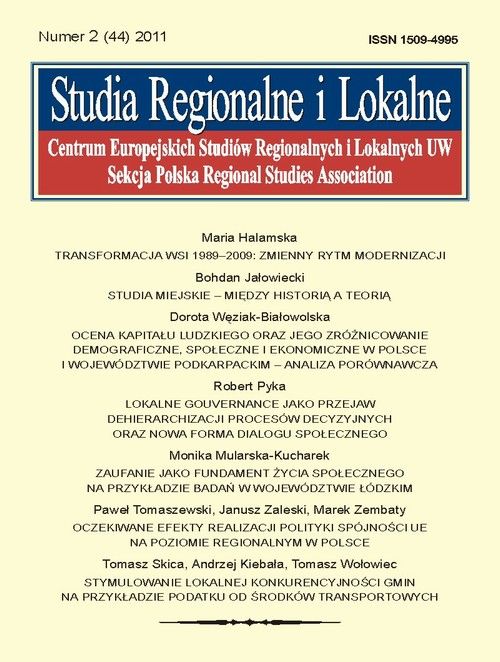
Transformacja polskiej wsi 1989-2009: zmienny rytm modernizacji
Abstrakt
W szkicu autorka wykazuje, że w długiej perspektywie czasowej na polskiej wsi, podobnie jak w Europie Zachodniej oraz Środkowej, zachodzą cztery wielkie procesy zmieniające jej oblicze: deruralizacja, dezagraryzacja, kształtowanie się nowego modelu rolnictwa (pezantyzacja/depezantyzacja) oraz restratyfikacja. Kształtują one nowe miejsce wsi w społeczeństwie, nowe miejsce rolnictwa w społeczeństwie i gospodarce oraz nową strukturę wsi jako subsystemu społecznego. Zmiany były obserwowane w całym analizowanym dwudziestoleciu, choć w krótszych odcinkach czasu przebiegały w różnym tempie. Trzy z nich - deruralizacja, dezagraryzacja i restratyfikacja są kontynuacją procesów, które zachodziły już przed 1989 r. Występują one powszechnie zarówno w Europie Zachodniej, jak i Środkowo-Wschodniej. Pewną oryginalność można natomiast odnotować w tworzeniu się nowego modelu agrarnego, dostosowania postkomunistycznych struktur produkcyjnych rolnictwa do gospodarki rynkowej.
Abstract
The author of this essay argues that, in a longer time perspective, four major processes have been taking place in the countryside and changing its character in Polish as well as in other countries in Western and Central Europe: de-ruralization, de-agrarianization, development of a new model of agriculture (peasantization/de-peasantization) and re-stratification. These processes are affecting 1) the place of the countryside in society, 2) the place of agriculture in society and in national economy, 3) the structure of the countryside as a social subsystem. These changes have been taking place throughout the last two decades, albeit with different speed in different time periods. Three of them, de-ruralization, de-agrarianization and re-stratification, are continuations of processes which took place before 1989. Their dynamics does not differ from that in Western and Central-Eastern Europe. The fourth, more original process can also be detected in the development of a new agrarian model: the adjustment of the post-communist structure of agricultural production to the market economy.




